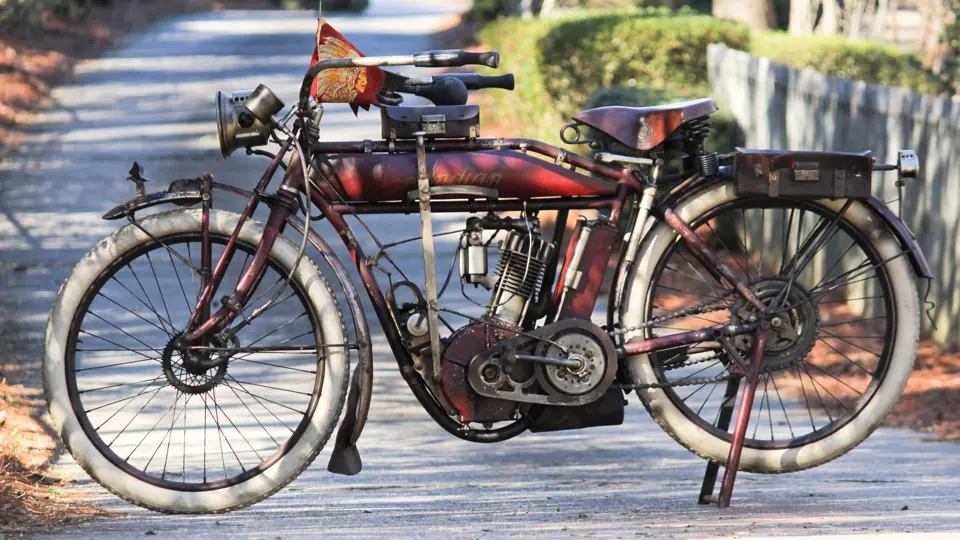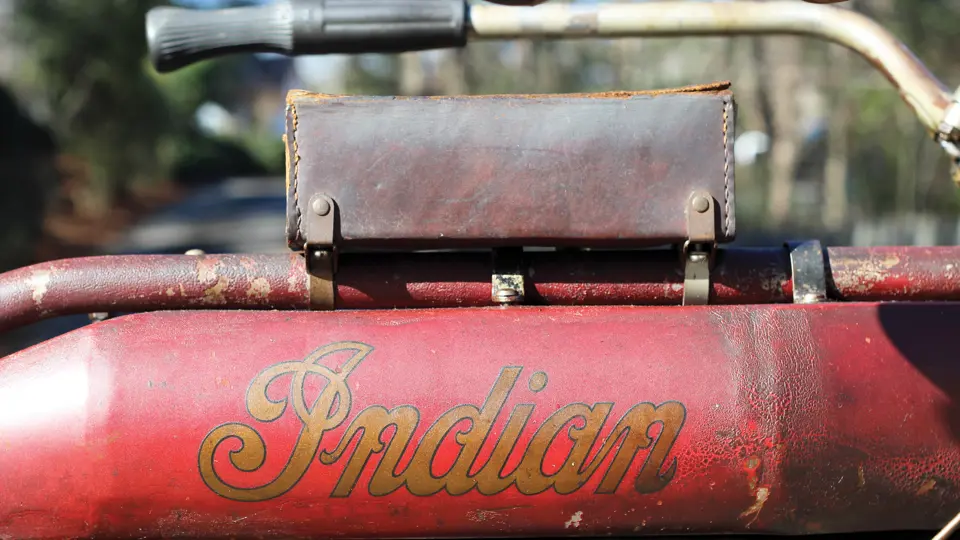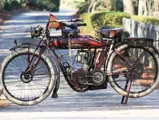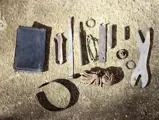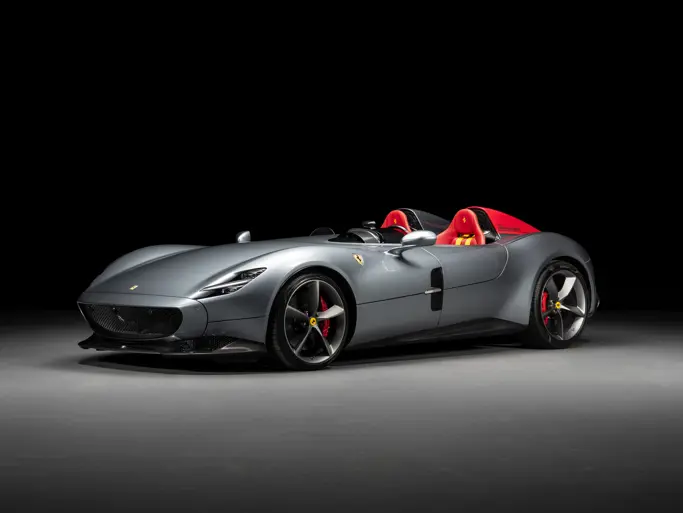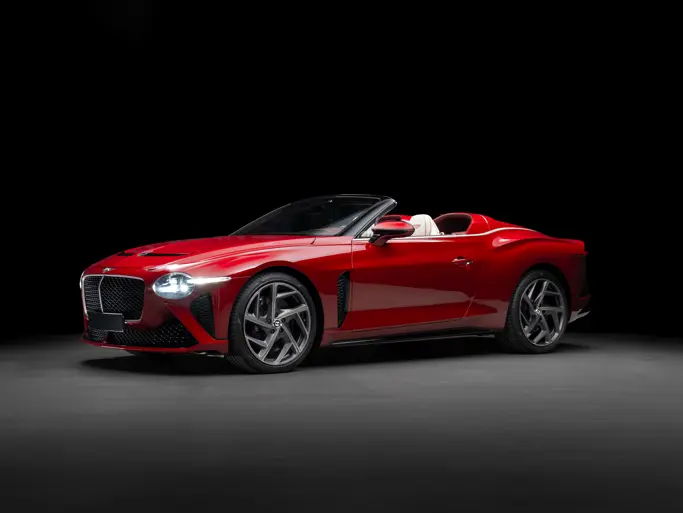4 hp, 30½ cu. in. single-cylinder pocket-valve Hedstrom-type engine, magneto ignition, Hedstrom carburetor, single-speed countershaft with chain-drive, pedal start, rigid frame, and leaf-spring trailing link fork. Wheelbase: 53.5 in.
With the days of the motorized bicycle behind them, Indian took the lead in the American motorcycle industry, producing rugged, powerful, and reliable machines for a network of thousands of dealers both at home and abroad. In the early 1910s, Indian ramped up production more than three-fold, eventually producing 30,000 machines in 1913. They planned to further expand their operations with numerous additions at their Springfield, Massachusetts, factory. Racing victories, including a sweep of the first three places at the Isle of Man Senior TT in 1911, helped propel the company into the mainstream, and increased advertising aided in making Indian a household name.
The lineup for the 1911 model year saw several improvements over that of the previous year. The 19-cubic inch Singles were discontinued due to the desire for more power, and a heavier clutch, which is operated by the standard lever on the left side of the tank, was designed for all of the chain-drive models.
This 1911 Indian Single is preserved in remarkable, unrestored, original condition. It features Indian’s reliable four-horsepower, single-cylinder engine with the original magneto ignition and Hedstrom carburetor. A single-speed countershaft transfers power from the motor to the rear wheel via front and rear drive-chains. The machine still retains its original red paint and countless accessories, including the original front-wheel drive speedometer, an acetylene-powered headlight and taillight, a manual Indian horn, an accessory air pump, a leather tool bag with the original tool kit, extremely rare leather saddlebags, and an original Indian flag, which mounts to the handlebars. Importantly, the Indian is in fully operational running condition.
Few examples of early teens Indians still in running condition exist today. Perhaps none are more complete and original than that which is presented here.

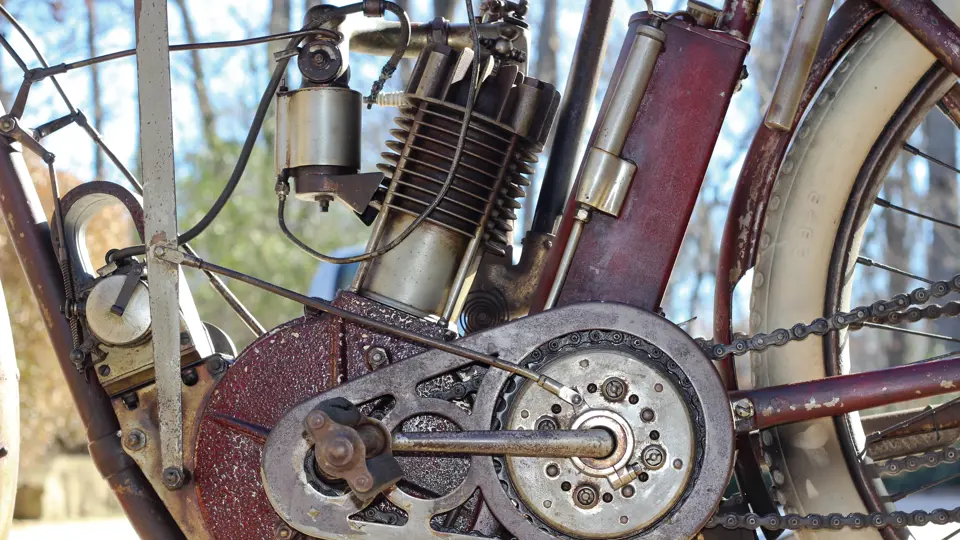
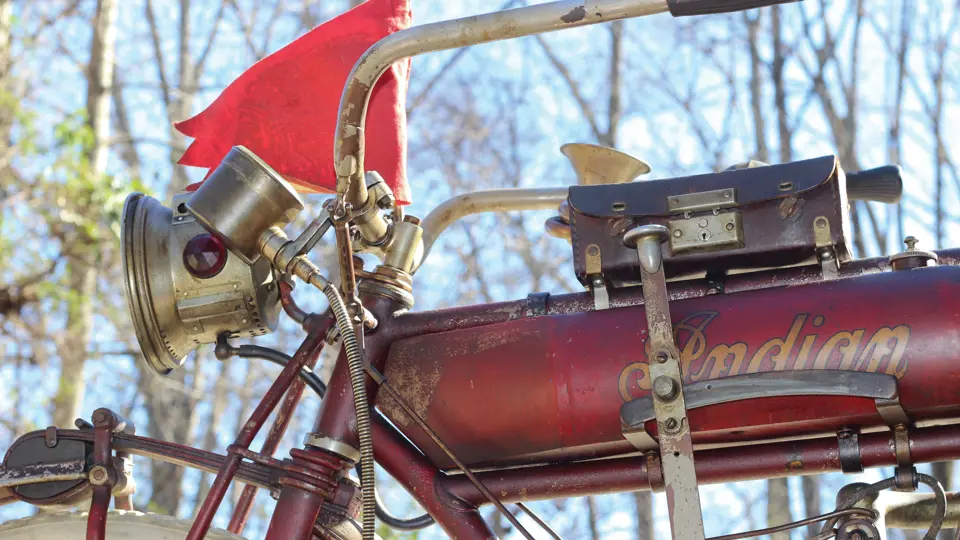

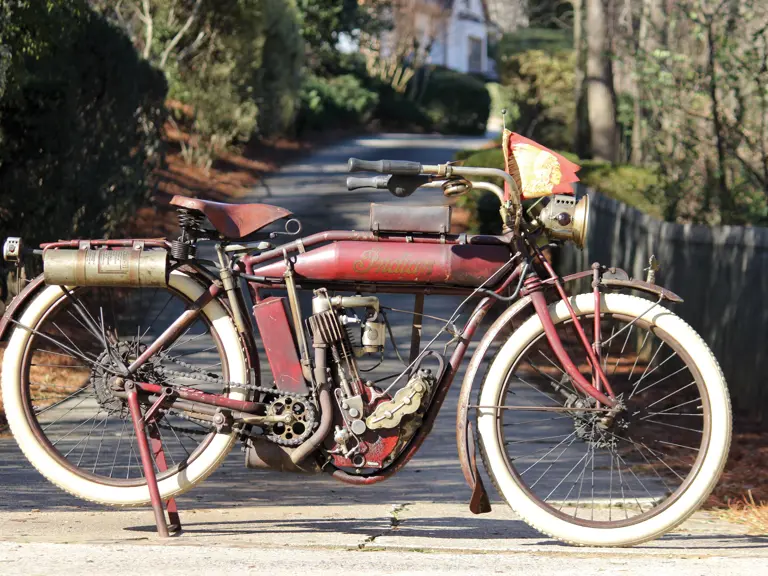

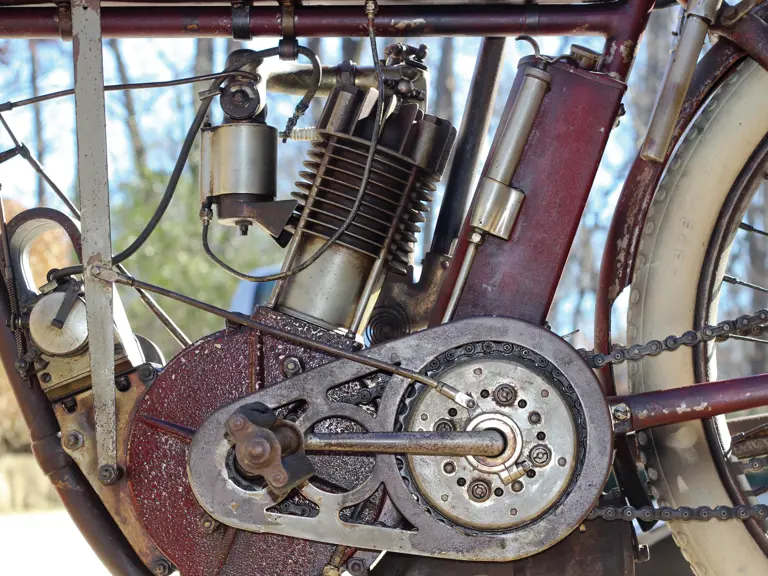
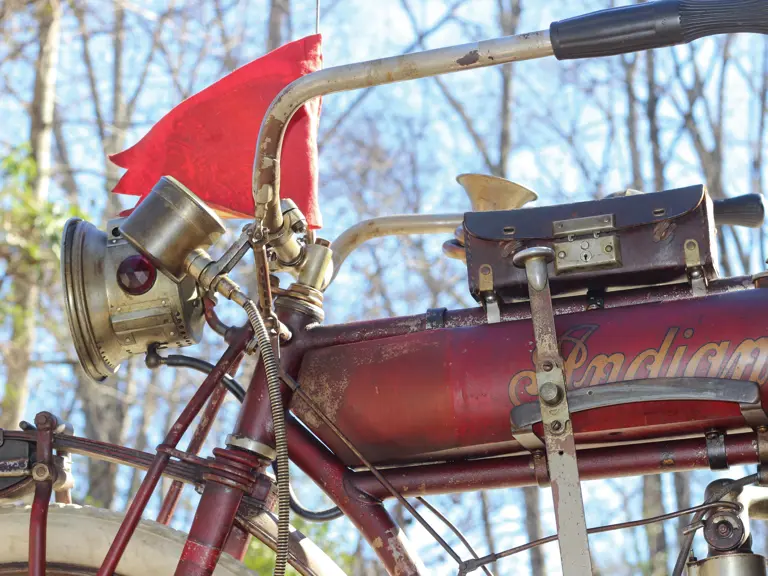
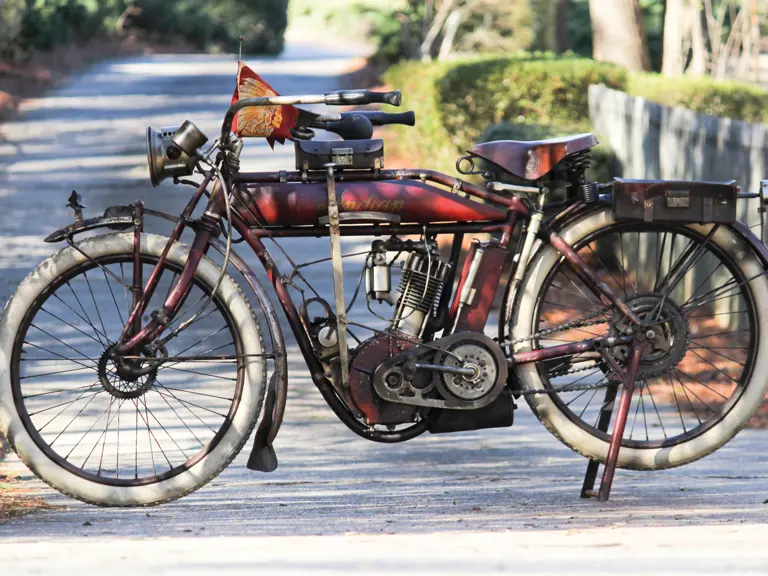



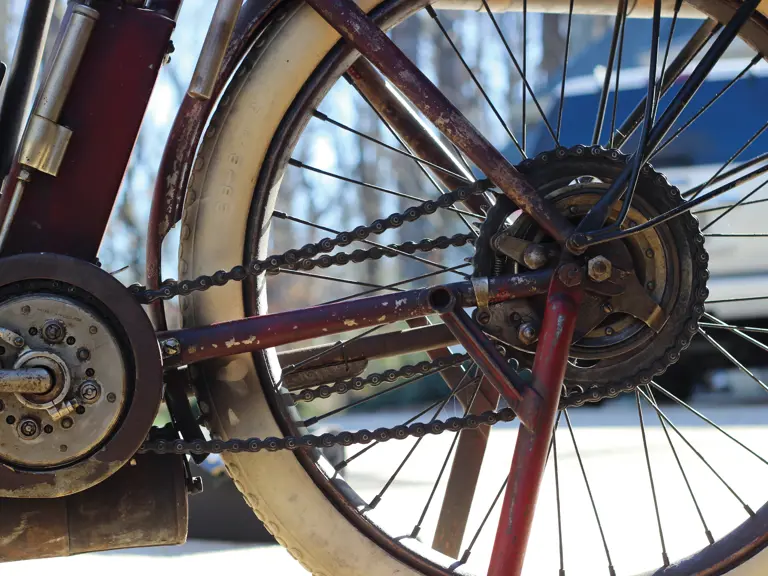

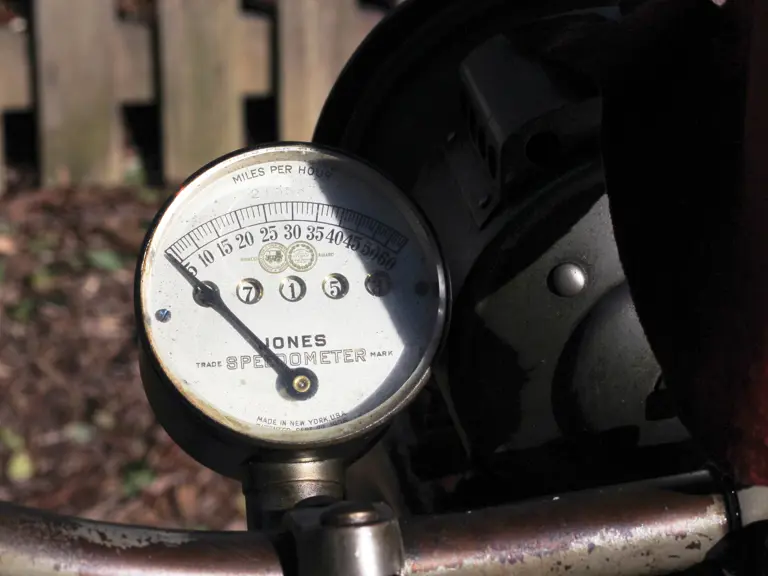
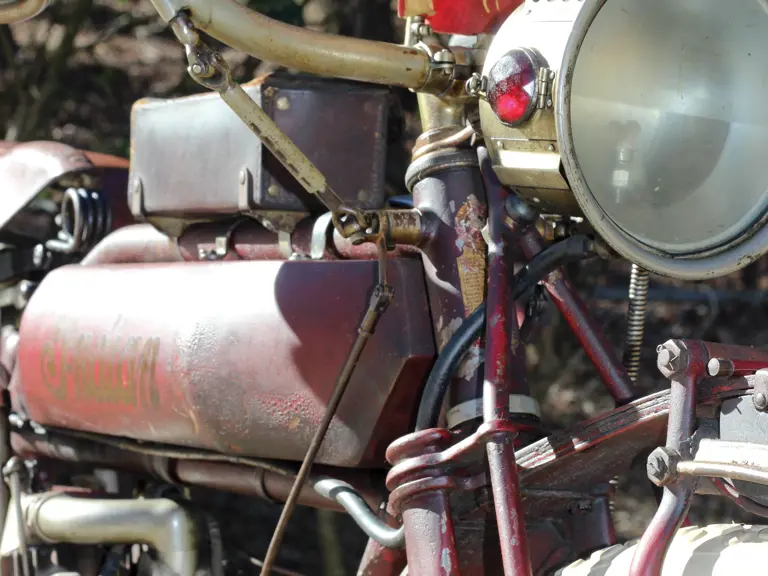

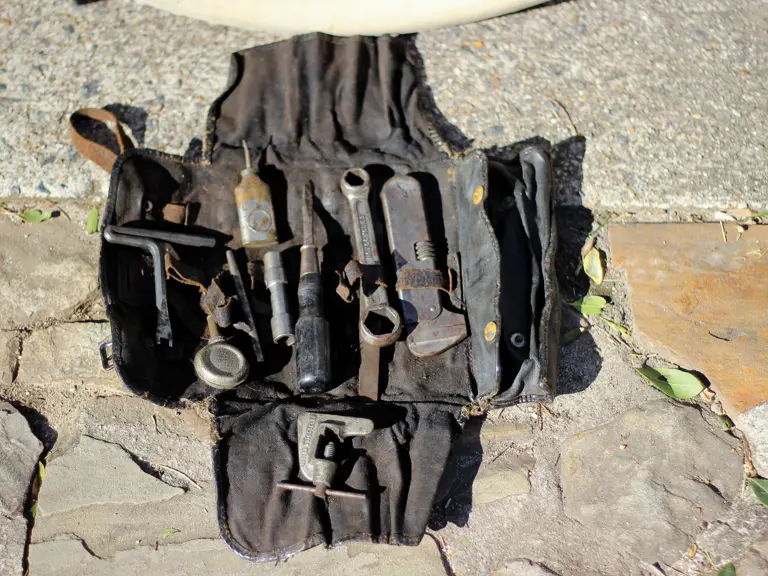
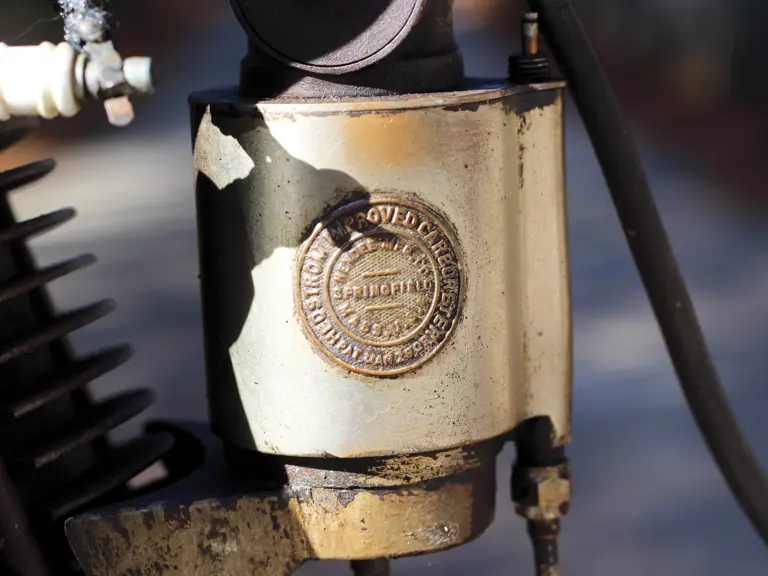
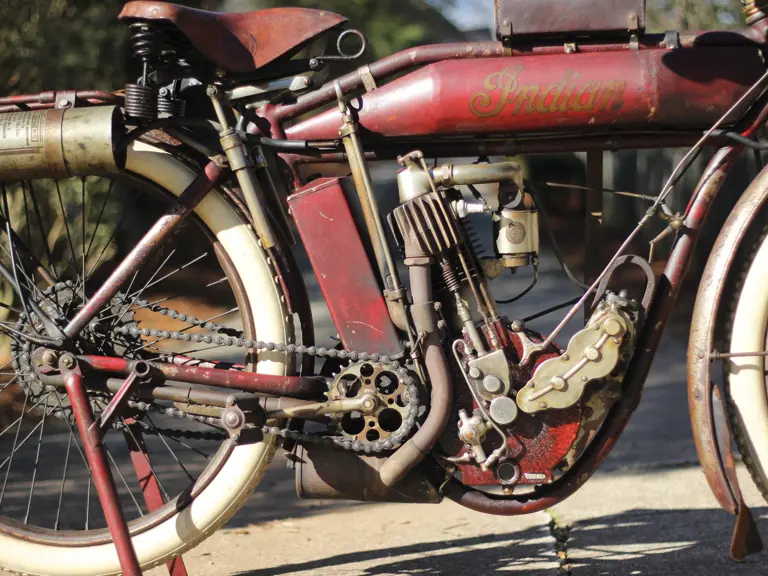
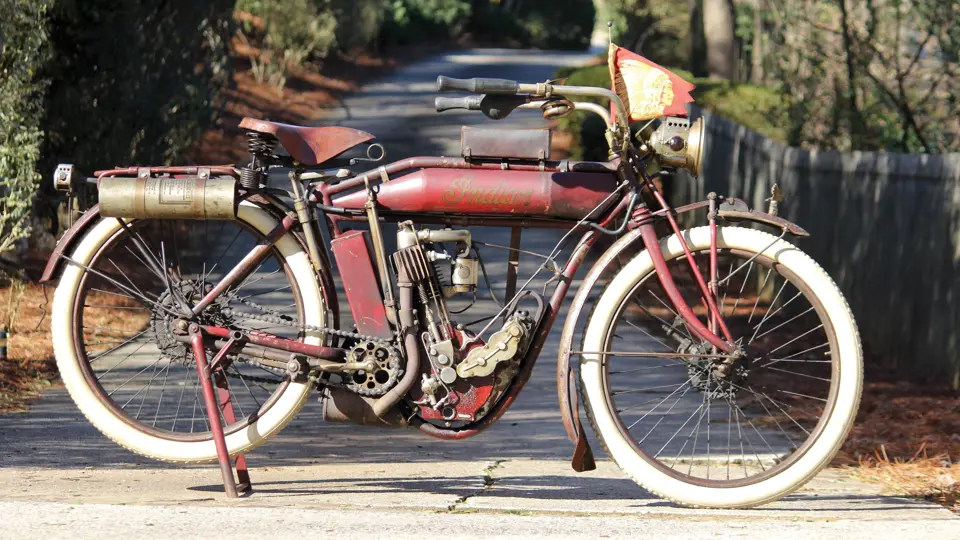
 | Amelia Island, Florida
| Amelia Island, Florida
